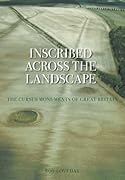<< News >> Mysterious saga of a 2,200-year-old lingam
Submitted by coldrum on Wednesday, 19 September 2007 Page Views: 39669
Multi-periodCountry: India Type: Ancient TempleInternal Links:
The most ancient Shiva lingam known to mankind is standing at the crossroads. Sri Parasurameshwara temple, located in Gudimallam, a hamlet 13 km from Renigunta junction in Chittoor district in southern Andhra Pradesh, has a 2,200-year old history as the longest continuously worshipped Shiva temple in the world. Its fascinating past and equally gripping present have culminated in a classic confrontation between modern values and ancient traditions.
Dating back to the third and second century BC, it is a simple structure consisting of a single semicircular chamber below ground level. Walking down the few steps into the garbha griha brings one face to face with a 1.35-metre, seven-sided monolithic lingam. The front plane has the figure of Parasurama standing on the crouching figure of a Yaksha. It rests on a base of seven concentric rings, or peethams, only two of which are visible above the surface.
The main lingam and peetham, which were once out in the open under a tree, are dated 3rd century BC, while successive rulers of Pallavas, Banas, Cholas and Rayas made later additions to the temple. The semicircular shrine is a clear feature of the influx of Buddhist architecture into Hindu ones, as was common in the period. The low railing surrounding the idol has floral patterns typical of Buddhist and Jain architecture. Inscriptions on the temple walls in ancient Tamil describe the royal donations made to the temple, besides the various modifications made by rulers.
The lingam is believed to be a manifestation of the Trinity, with Brahma at the bottom, Vishnu in the middle and Shiva on top. A riveting legend is associated with how this came to be.
A Puranic tale tells of Parasurama having beheaded his mother at the behest of his father. The sage was advised by rishis to locate the temple and to worship the lingam as a penance. After much searching, Parasurama found the temple in the middle of the forest, dug a pond nearby and began his purgation.
A single divine flower used to grow miraculously in the pond each day, which the sage offered to Shiva as worship. He appointed a yaksha, Chitrasena, to guard the flower from wild beasts. Parasurama used to bring one hunted creature and toddy everyday for the yaksha.
One day, Chitrasena, a devotee of Brahma, felt tempted to worship Shiva himself. An enraged Parasurama attacked Chitrasena when he found the flower missing.
The battle lasted for 14 years, and was so fierce that a pallam, or pit, was created at the site. ’Gudipallam’, or ‘temple in the pit’, became Gudimallam over time. Unable to choose the victor, Shiva is finally said to have merged both into Himself, and the figures still etched show the hunted beast and toddy pot in Parasurama’s hand. Brahma as Chitrasena, Vishnu as Parasurama and Shiva as the lingam form this unique, unparalleled icon.
There are smaller shrines in the courtyard, mainly for Goddess Parvati, the six-faced Kartikeya and Suryanarayana, all monoliths and over 1.25 metre tall. The sun god is shown standing erect with a flower in each hand, one of the earliest known depictions, comparable to the temples at Konark and Arasavalli in Srikakulam district.
A mysterious event associated with the temple is that of the main chamber getting flooded every sixty years. A small underground tank and a duct connecting the tank to the Shiva lingam can be seen even today. These remain stone dry except during the 60 year phenomenon when water suddenly gushes through with such force that it rises over the column of the lingam, flows over the top and subsides as suddenly. The last time this happened was on December 4, 2005. Monument attendant P. Seenappa, who has recorded the incident in the temple register, says that the episode lasted just a few minutes. The water then fell and remained at six inches for four hours, after which it disappeared as though it was never there. Oldsters remember it happening earlier. Ramanaiah, a 75-year old villager said that he saw a similar phenomenon in 1945, except that the entire chamber had got flooded then.
Archaeological Survey of India (ASI) conservation assistant Krishna Chaitanya says that the water table in the area is at a depth of 300-350 feet, so there is no tangible explanation for the phenomenon. Devotees believe that the water comes all the way from Kashi to do abhishekam to the lingam.
There is yet another remarkable feature of the temple. The rising sun’s rays pass through the grills carved on the stone walls twice a year during the solstices (uttarayana and dakshinayana) and fall directly on the forehead of the main Shiva lingam.
The modern chapter in the temple’s history begins with the ASI taking it over in 1954. The former director of the ASI, Dr I.K Sarma, made important discoveries while excavating the region, and calls it the earliest extant Shiva lingam in India.
He unearthed a two feet of the structure in 1994, and asserts that the iconographic features of the central engraved figure indicate it to be that of Agnirudra Shiva, and not Parasurama. Dr Sarma says that no rituals such as abhishekams are permitted in the ASI protected monument, considering its age and importance. The villagers of Gudimallam are distressed at the 2,200-year old tradition being interrupted, and believe it to be the cause of a sudden downturn in the village’s prosperity.
The conflict between simple practicality and religious sentiments came to a head with a tragic incident in 1995. Villagers speak of a mother who, wanting to celebrate her son’s birthday, went to the temple with the child and three of his friends. ASI workers had been cleaning the temple walls, and had left for a break leaving the inflammable cleaning chemicals in the sanctum sanctorum. Seeing the place empty, the woman lit camphor. The fumes exploded causing the instant death of the woman and the four children.
The ASI, which has no record of the episode, has forbidden all forms of worship since. Temple endowment board chairman Narsimhalu Yadav says that the once prosperous village is now dying and believes the interruption of ritual worship and the falling down of the dhwajasthambam 30 years ago to be the reasons behind it.
Science and tradition are at cross-purposes, with no likelihood of a true winner emerging.
From asianage.com Original article written by Uma Devarajan.






 We would like to know more about this location. Please feel free to add a brief description and any relevant information in your own language.
We would like to know more about this location. Please feel free to add a brief description and any relevant information in your own language. Wir möchten mehr über diese Stätte erfahren. Bitte zögern Sie nicht, eine kurze Beschreibung und relevante Informationen in Deutsch hinzuzufügen.
Wir möchten mehr über diese Stätte erfahren. Bitte zögern Sie nicht, eine kurze Beschreibung und relevante Informationen in Deutsch hinzuzufügen. Nous aimerions en savoir encore un peu sur les lieux. S'il vous plaît n'hesitez pas à ajouter une courte description et tous les renseignements pertinents dans votre propre langue.
Nous aimerions en savoir encore un peu sur les lieux. S'il vous plaît n'hesitez pas à ajouter une courte description et tous les renseignements pertinents dans votre propre langue. Quisieramos informarnos un poco más de las lugares. No dude en añadir una breve descripción y otros datos relevantes en su propio idioma.
Quisieramos informarnos un poco más de las lugares. No dude en añadir una breve descripción y otros datos relevantes en su propio idioma.